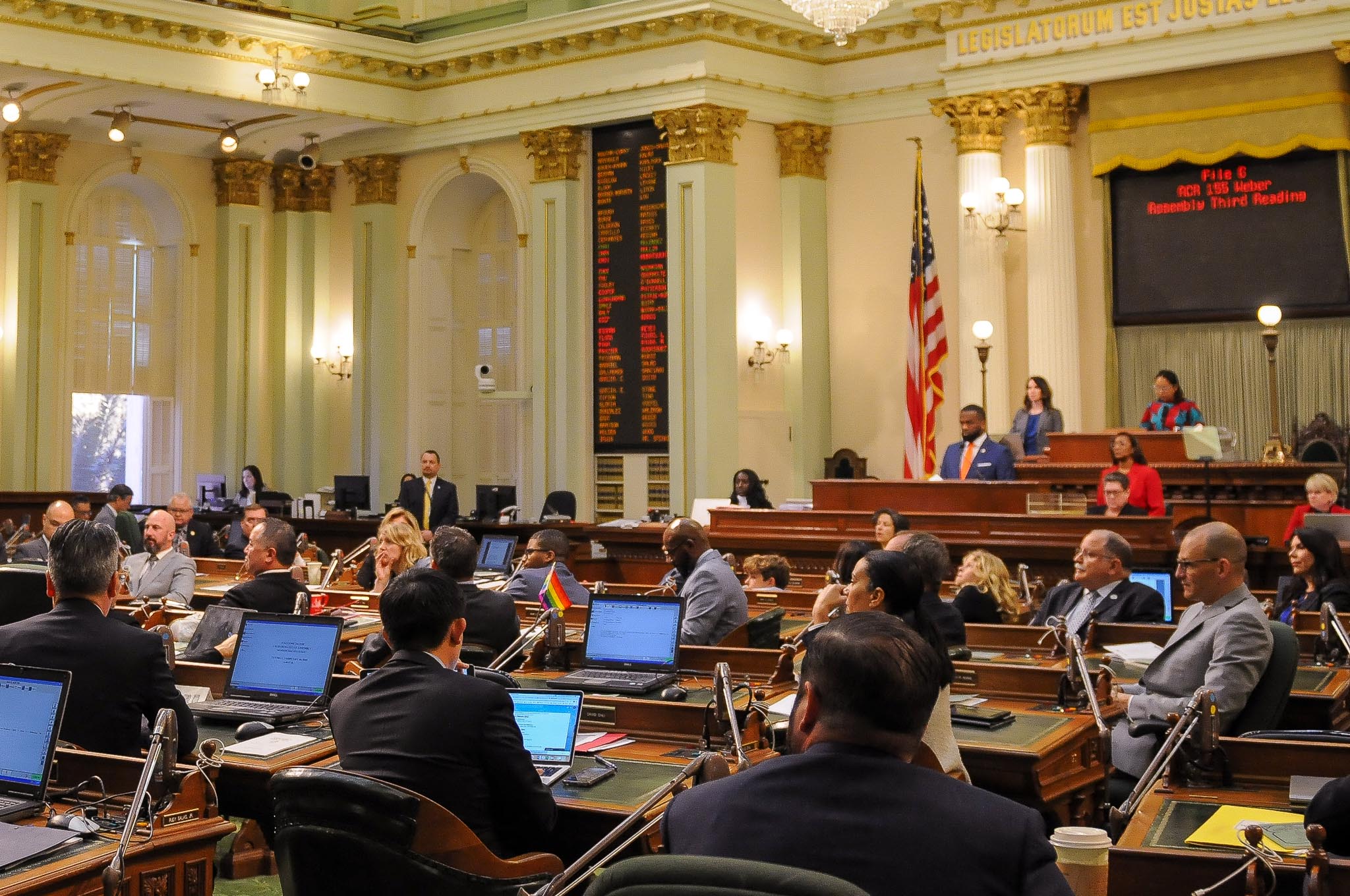
California State Capitol Dome. (Photo: Kevin Sanders for California Globe)
Legislative Findings and Intent Statements Should Be Separate
They should be set forth in different sections of a bill
By Chris Micheli, October 8, 2023 5:57 pm
I have written previously about the similarities and differences between findings and declarations set forth in a bill and legislative intent statements. While both of these types of statements are made by the California Legislature, my opinion is that they should be set forth in different sections of a bill, regardless of whether one or both sets of statements are codified or uncodified.
In my view, legislative findings and declarations usually set forth a factual basis or purpose for the proposed legislation, while legislative intent statements simply set forth the intent of the Legislature.
The following is an example from a bill that reached Governor Newsom’s Desk at the end of the 2023 California Legislative Session. If enacted, it would provide uncodified language that includes both findings and declarations, as well as intent statements in the same bill section. Subdivisions (a) through (f) below are the findings and declarations, while subdivisions (g) through (i) below are the legislative intent statements.
SECTION 1.
The Legislature finds and declares all of the following:
(a) The housing crisis has reached unprecedented and unacceptable proportions in the State of California, where more than two in five households spend greater than 30 percent of their income on housing and more than one in five households spend greater than 50 percent of their income on housing.
(b) The United States Department of Housing and Urban Development defines cost-burdened families as those who pay more than 30 percent of their income for housing and may have difficulty affording necessities such as food, clothing, transportation, and medical care. Severe rent burden is defined as paying more than 50 percent of one’s income on rent.
(c) Housing burden creates severe financial, physical, and emotional impacts on households.
(d) The affordable housing crisis has imposed a significant toll on the California economy, as overpriced rents depress the California gross domestic product by approximately 2 percent and more than 600,000 people leave the state annually in search of lower rent.
(e) Current efforts, while laudable, have proven insufficient in resolving the state’s affordable housing crisis, since 97 percent of cities and counties have been unable to meet the regional housing needs assessment targets for very low income, low-income, and moderate-income housing.
(f) With such a great failure to meet the housing needs of California residents, the state has a duty to act and help localities by financing publicly owned, affordable housing built sustainably, based on the widely successful Vienna and Singapore models and many other successful models of mixed-income rental and ownership housing.
(g) It is the intent of the Legislature to establish the Social Housing Program to offer the necessary social housing to increase housing production and acquisition in all jurisdictions throughout the state, which will inform the future establishment of an independent public entity to develop, own, and maintain social housing in California. The Legislature intends the program to be the first step in creating social housing in California. Social housing is publicly owned, mixed-income housing, removed from market forces and speculation, and built with the express aim of housing people equitably and affordably. Under public control and oversight, social housing is sustainable and remains affordable in perpetuity.
(h) It is the intent of the Legislature in enacting this title to set an ambitious goal for creating social housing, through both new production and preservation of existing units, and to establish the means for achieving that goal.
(i) It is further the intent of the Legislature for the Social Housing Program to ensure that no Californian pays more than 30 percent of their income on housing by the year 2050.
So, what is wrong in the above example? In my opinion, findings and declarations and legislative intent are two entirely separate and distinct statements made by the Legislature. As a result, they should be set forth in their own, individual sections of a bill. In other words, they should not be combined into the same bill section.
Another reason for these two types of statements to be in separate sections of a bill is because it seems strange to me that legislative intent statements would be prefaced with, “The Legislature finds and declares.” The Legislature does not find and declare its own intent. Instead, the institution simply states that “It is the intent of the Legislature to…” Therefore, legislative intent statements should not be contained in the same bill section as findings and declarations.
The example below is from another 2023 California Legislative Session bill that has reached the Governor’s Desk. Section One of the bill contains three uncodified legislative findings and declarations, while Section Two of the bill contains two codified legislative intent statements. My opinion is that the following example is the better approach to setting forth these two different types of legislative statements in a bill:
SECTION 1.
The Legislature finds and declares all of the following:
(a) As California transitions to a decarbonized economy, an increasing number of oil producing wells are becoming idle. There are approximately 107,000 active and idle oil and gas wells in the state, all of which will at some point end their productive life and will require plugging and abandonment and site restoration under existing law.
(b) Analysis performed in 2018 by the California Council on Science and Technology found that more than 5,000 wells in the state may already either be “orphaned” without a responsible party who can pay for plugging and abandonment, or be at high risk of being orphaned, resulting in a potential net liability to the state of $500,000,000. The council’s analysis further found that more than 69,000 additional wells are economically marginal or idle, and hence could become orphaned wells in the future as their production declines or as they are acquired by financially weaker operators, or both.
(c) Well owners, including those who own idle and marginally producing wells, frequently transfer those wells to less solvent entities. These transfers increase the likelihood that public funds will be needed to pay for plugging and abandonment of those wells, because funds available through existing bonds are inadequate to pay the cost of plugging and abandonment of those wells. The council’s analysis concluded that while the average cost to remediate an onshore well is close to $68,000, the average bond funding available per well is close to $1,000.
SEC. 2.
Section 3017 is added to the Public Resources Code, to read:
(a) It is the intent of the Legislature that the oil and gas industry pay for all necessary costs of plugging and abandonment and site restoration of oil and gas wells.
(b) It is the intent of the legislature that, to minimize the risk that the state will be liable for costs of plugging and abandonment, no well be transferred to another owner until and unless a bond has been filed that would cover the full cost of plugging and abandonment and site restoration.
In the above example, there are two separate bills sections. The first one is for the findings and declarations, which should come first (i.e., be contained in Section One of the bill because they provide the basis for the bill’s provisions and are a precursor for the intent statements). The second one is for the legislative intent statements, which should come second (i.e., be contained in Section Two of the bill because they provide the statements that appropriately follow the findings, or the basis for the bill).
- General Provisions of California’s LLC Act - January 10, 2026
- Interpretation of Arbitration for International Disputes - January 9, 2026
- Uniform Partnership Act in California - January 9, 2026




